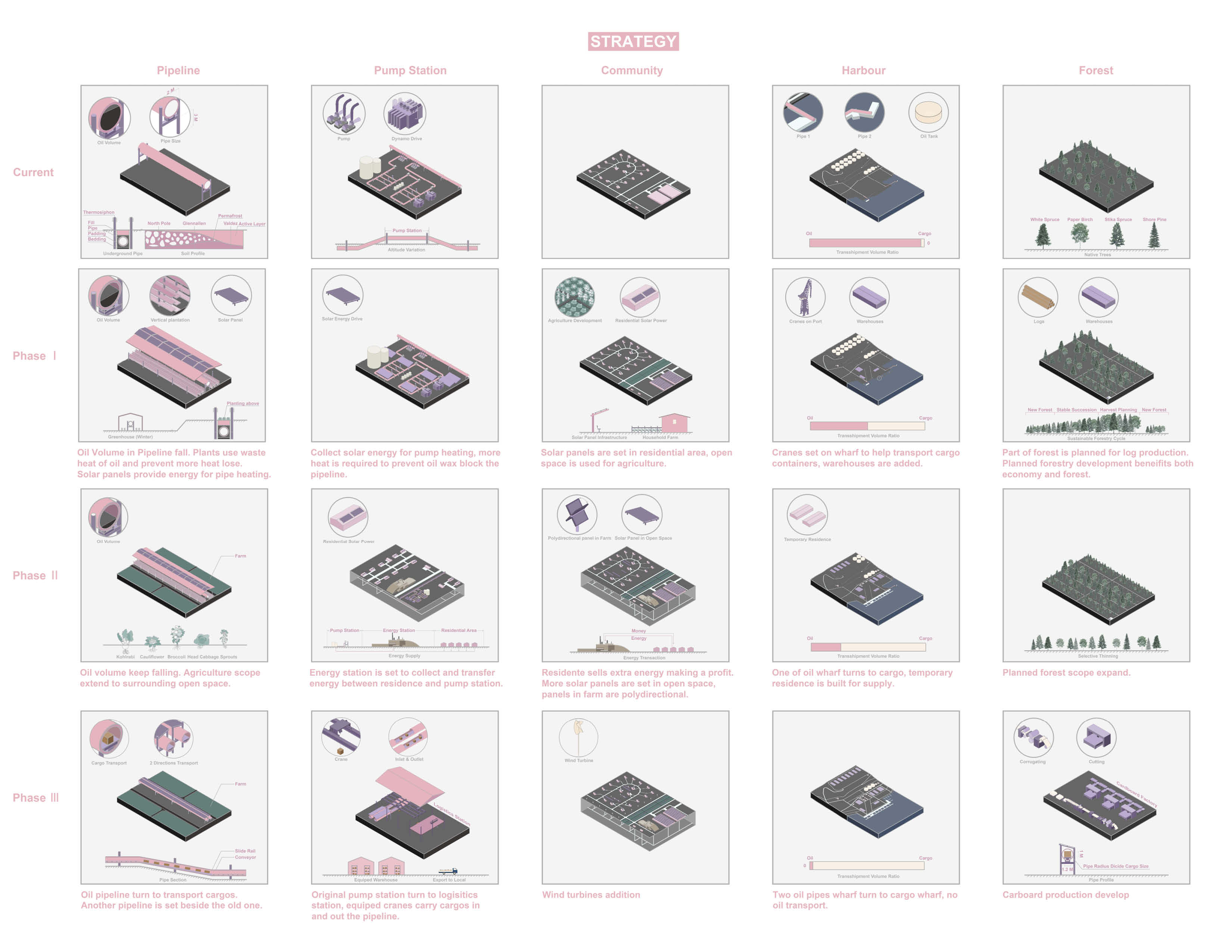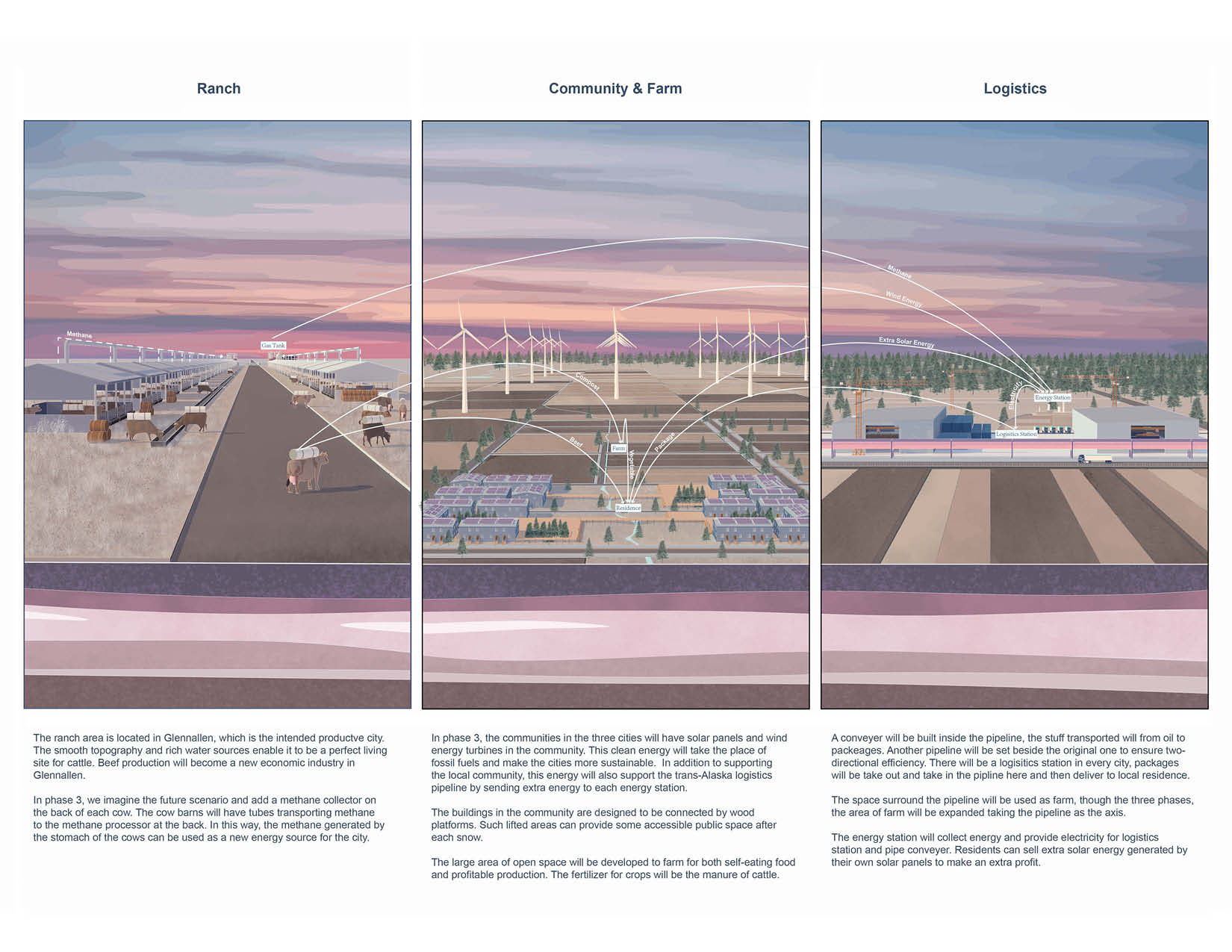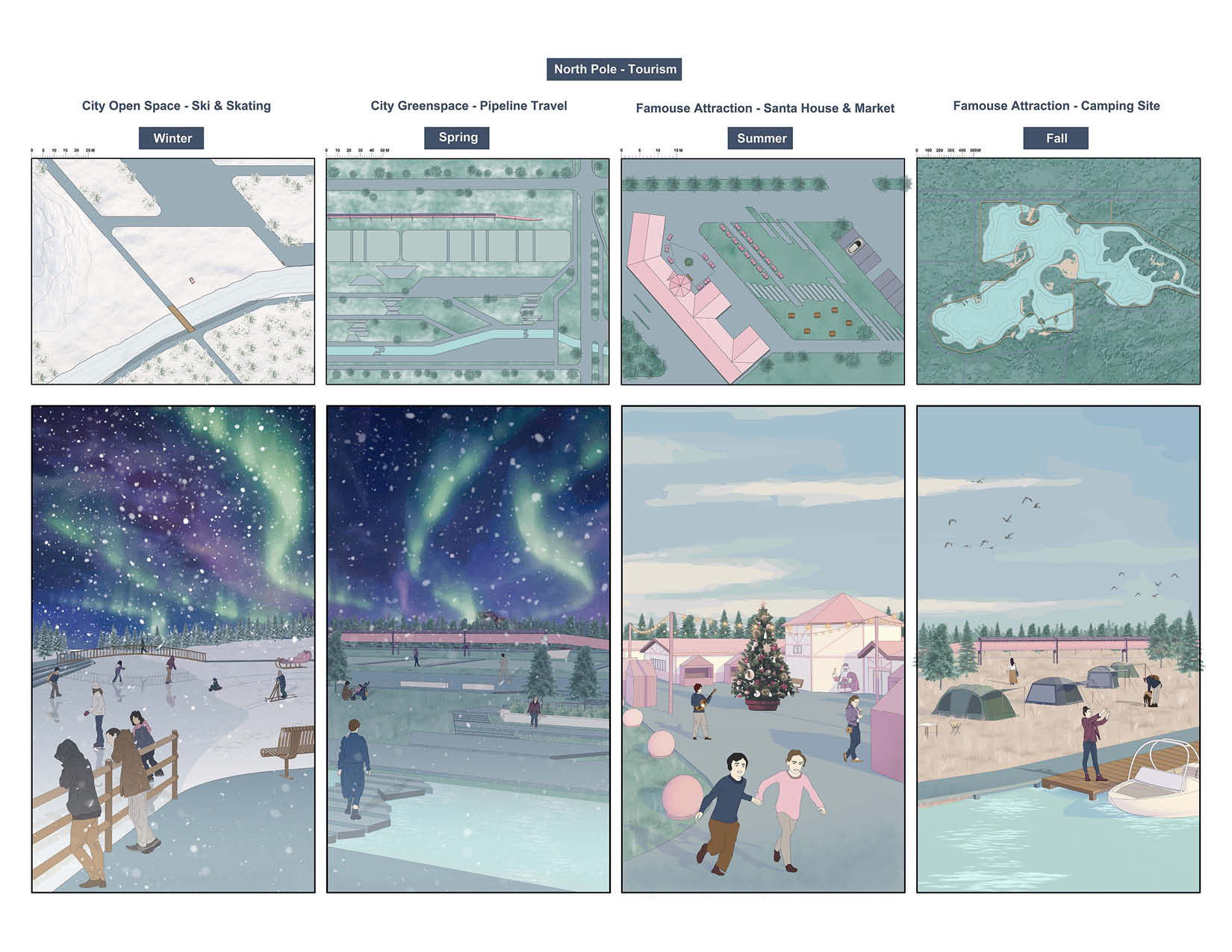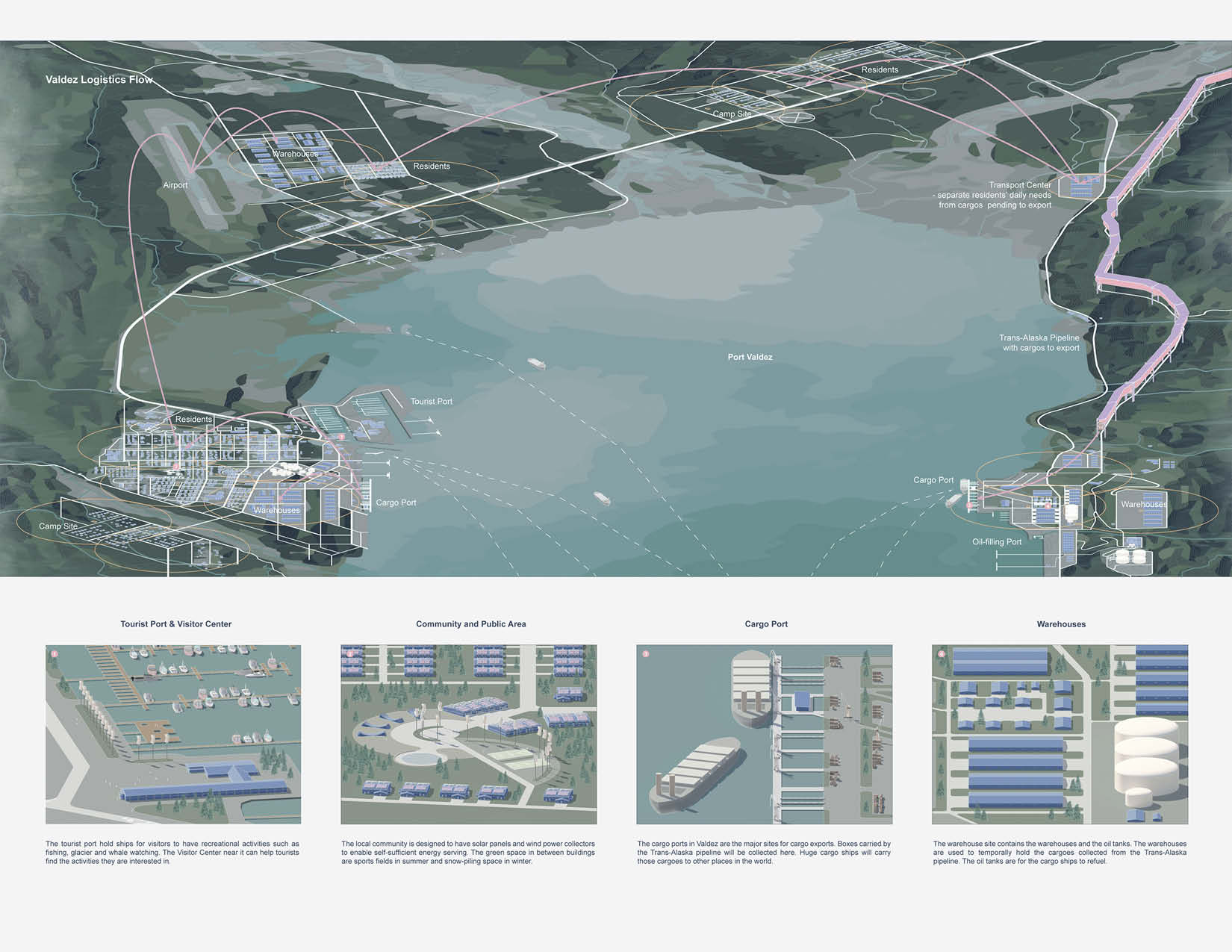Trans-Alaska: Post-Oil Urban Regeneration
- Time: 2021.05 - 2021.12, Academic work
- Collaboration: Xuan Liu
- Location: North Pole, Glennallen, Valdez, Alaska
- Medium: ArcMap, Rhino, Adobe Suite
Project description
Currently, Alaska has rich oil and petroleum resources. Most of the oil and gas productions in the US come from the North Slope Borough, Alaska, which has the biggest oil field in North America. These oils are transported from the North Slope oil field to the nearest ice-free port located in Valdez through the Trans-Alaska Pipeline System. This pipeline system connects the north and south coast of Alaska and has eight pump stations to add pressure and heat to the pipeline to keep the oil away from freezing. The regular maintenance work of this pipeline system and oil export-related jobs support the economy of the boomtowns near it.
However, because of the heavy oil extractions, the oil production of the North Slope starts to decrease, and we will deplete oil extractions in 2080. This depletion will cause a huge impaction on the local economy, power generation, and residents. Therefore, urban regeneration is needed to bring new opportunities to the Trans-Alaska Pipeline system and those oil-oriented cities.
Inspired by the current role of Anchorage, we decided to change the Trans-Alaska pipeline from transporting oil to carrying cargos, and we chose three typical cities, North Pole, Glennallen, and Valdez, as examples. We design to set up the regeneration process into 3 phases to enable a smooth shift of the roles of the cities. In the near future, North Pole will change into a tourism city; Glennallen will change into a productive city; Valdez will transform into a logistics city. The economy of the cities around the pipeline will shift from oil-based to a diverse mixture of agriculture, ranch, fishery, forestry, tourism, and logistics. The energy production will shift from fossil fuels to clean energy, which will lead to a cleaner and more sustainable future.







